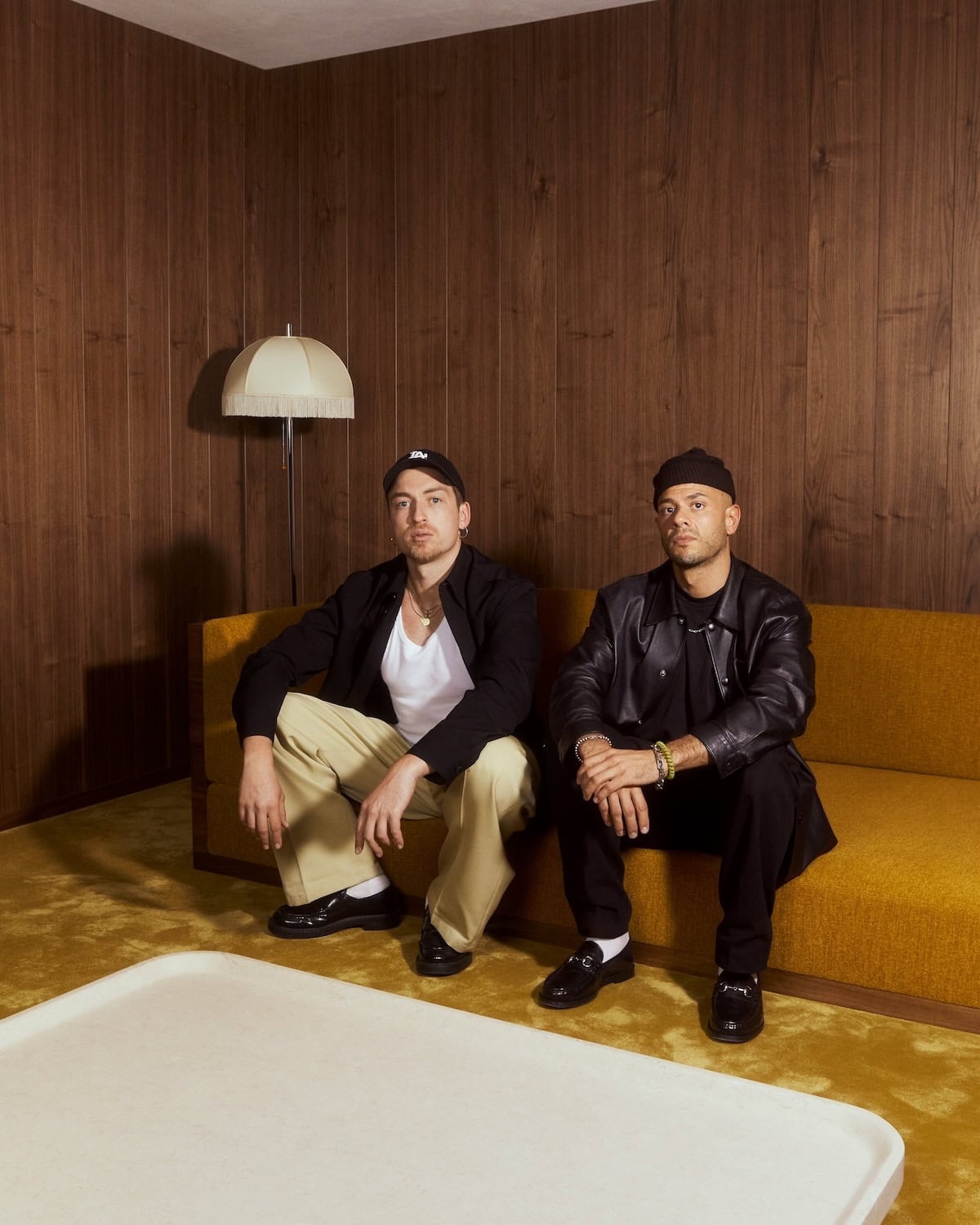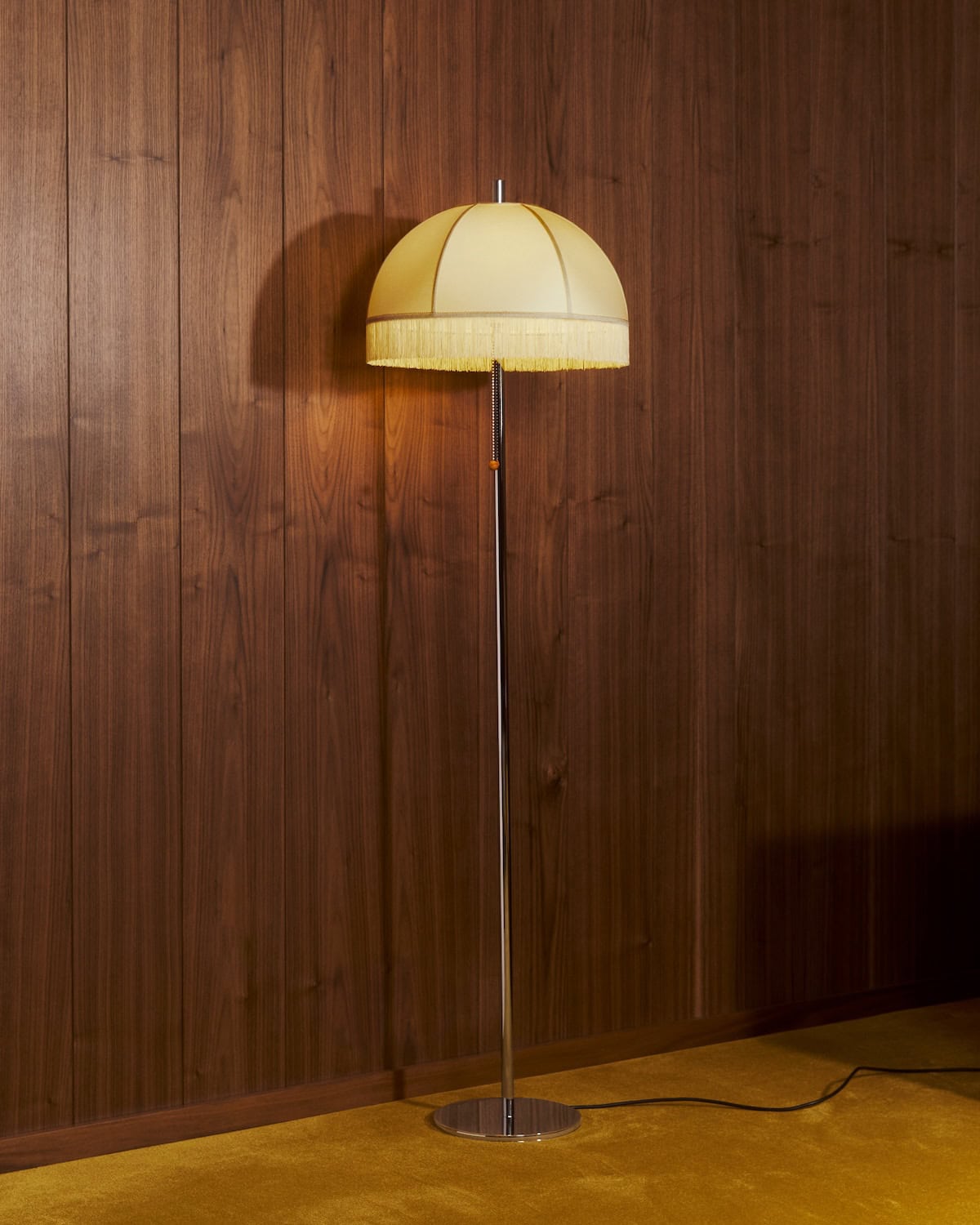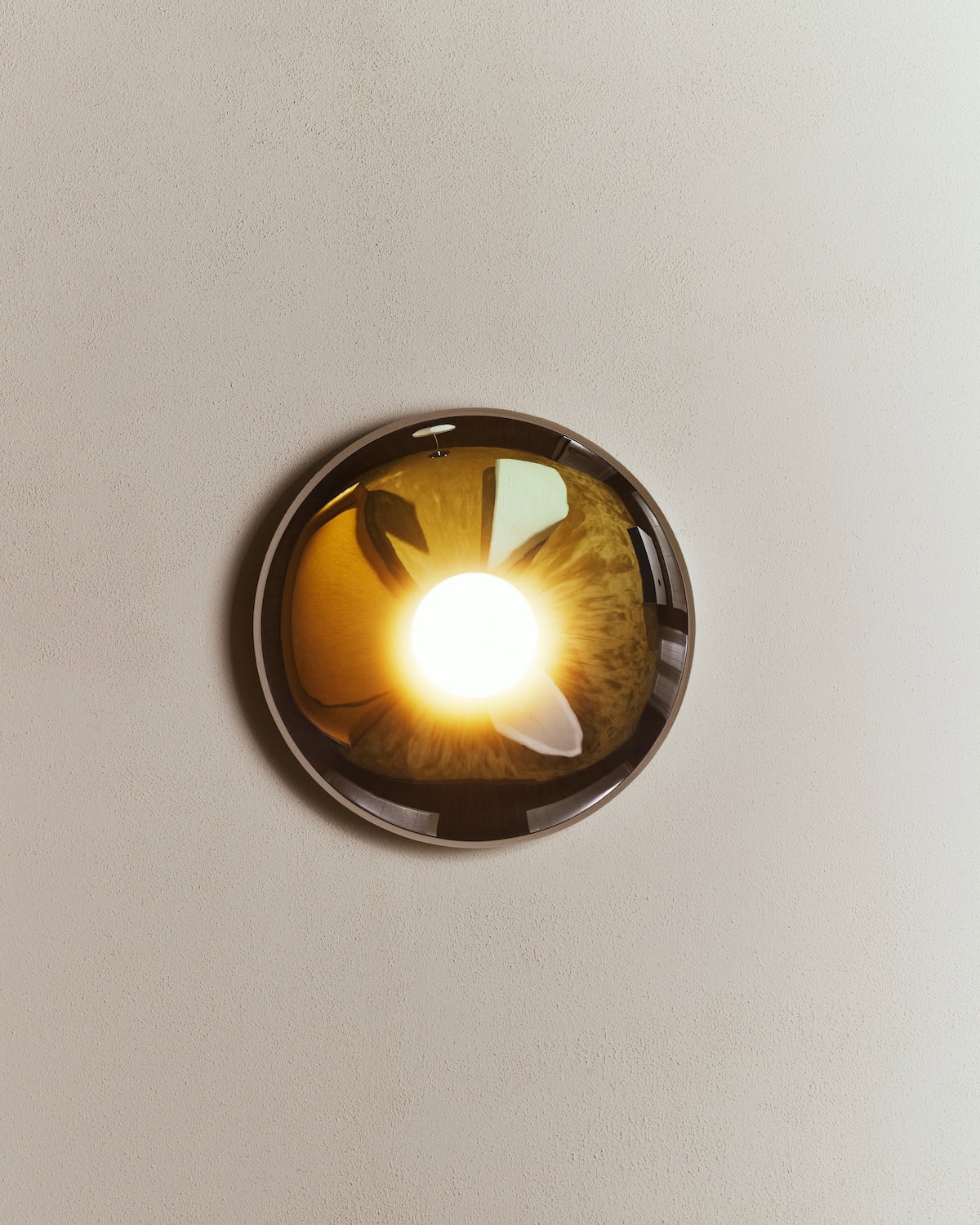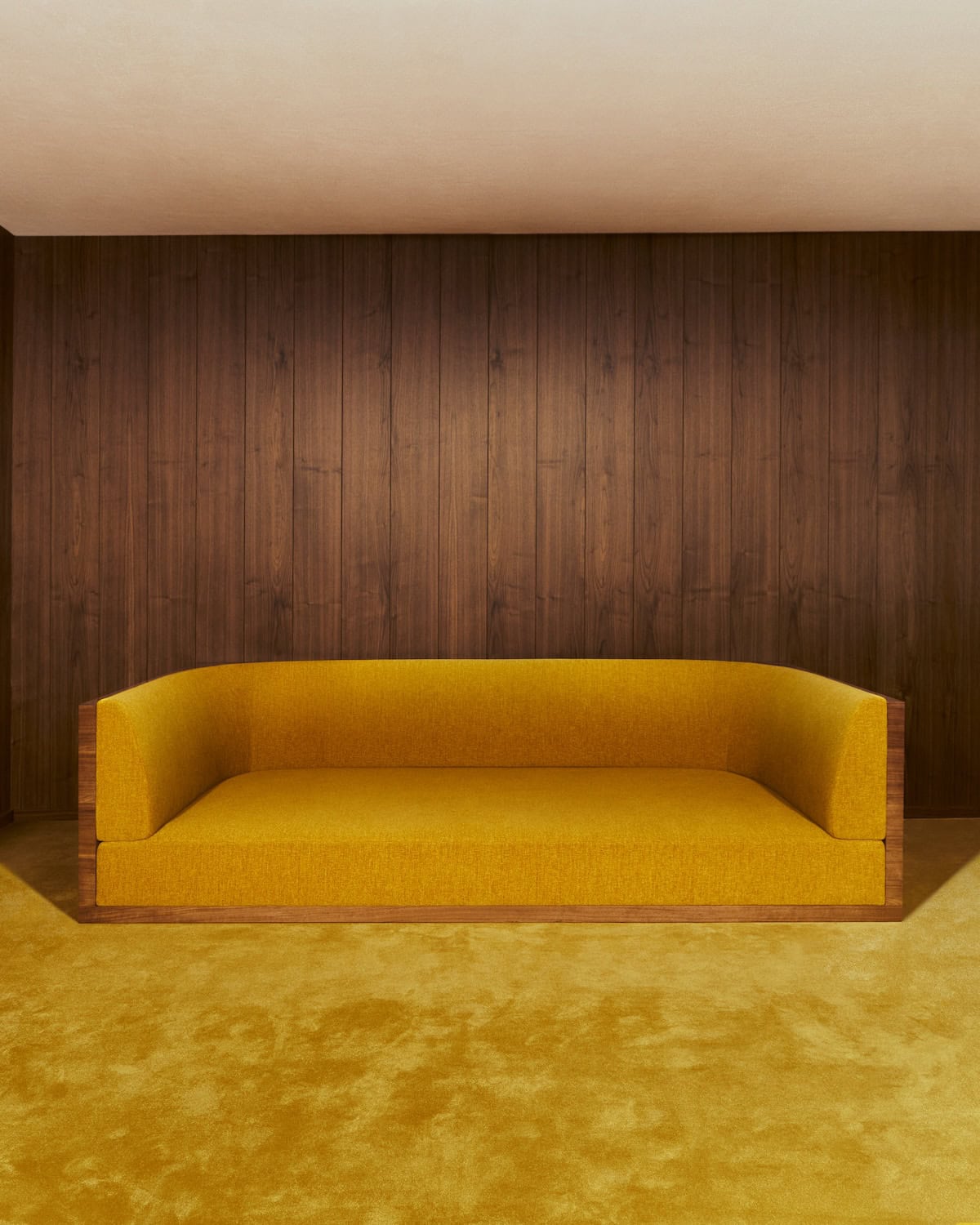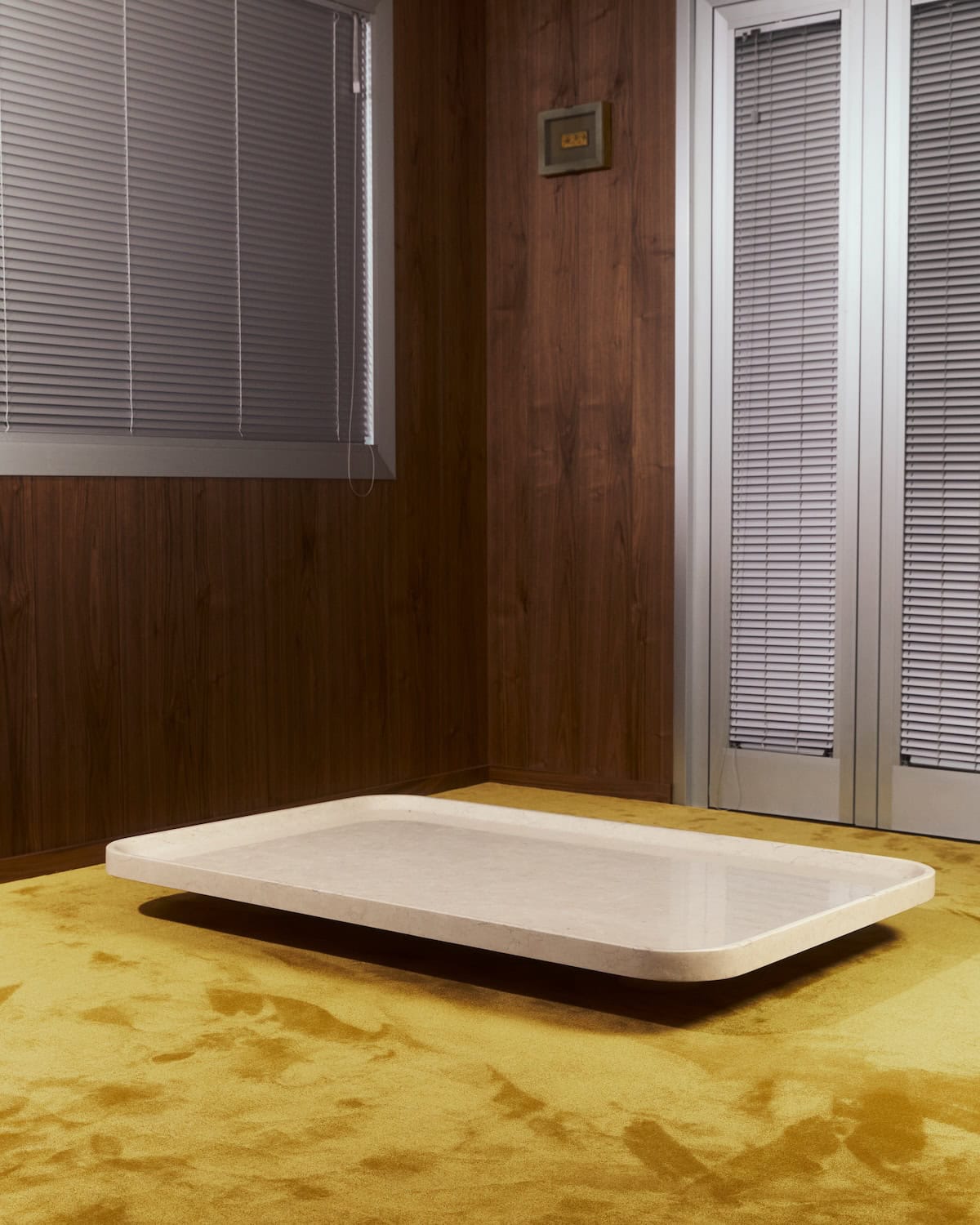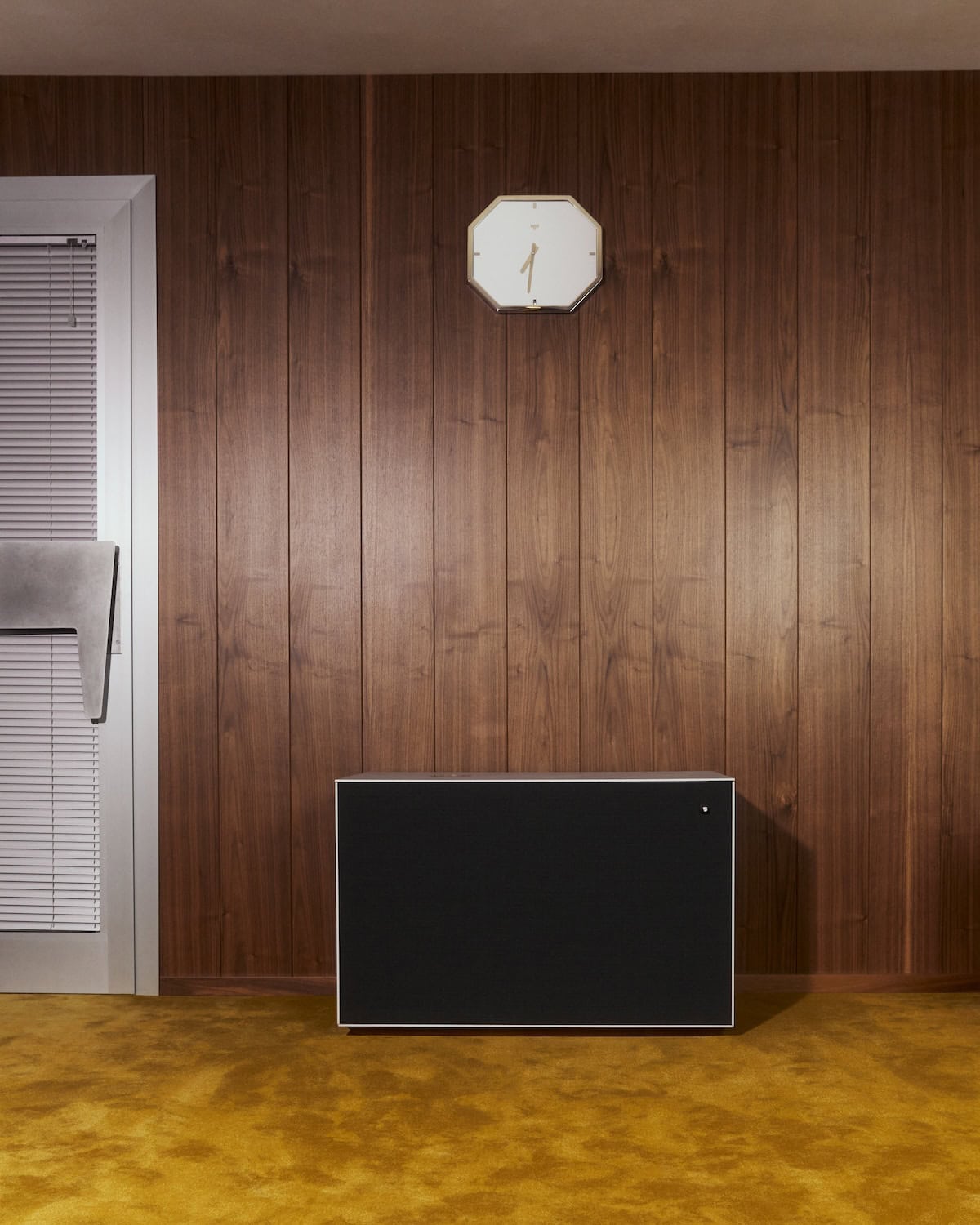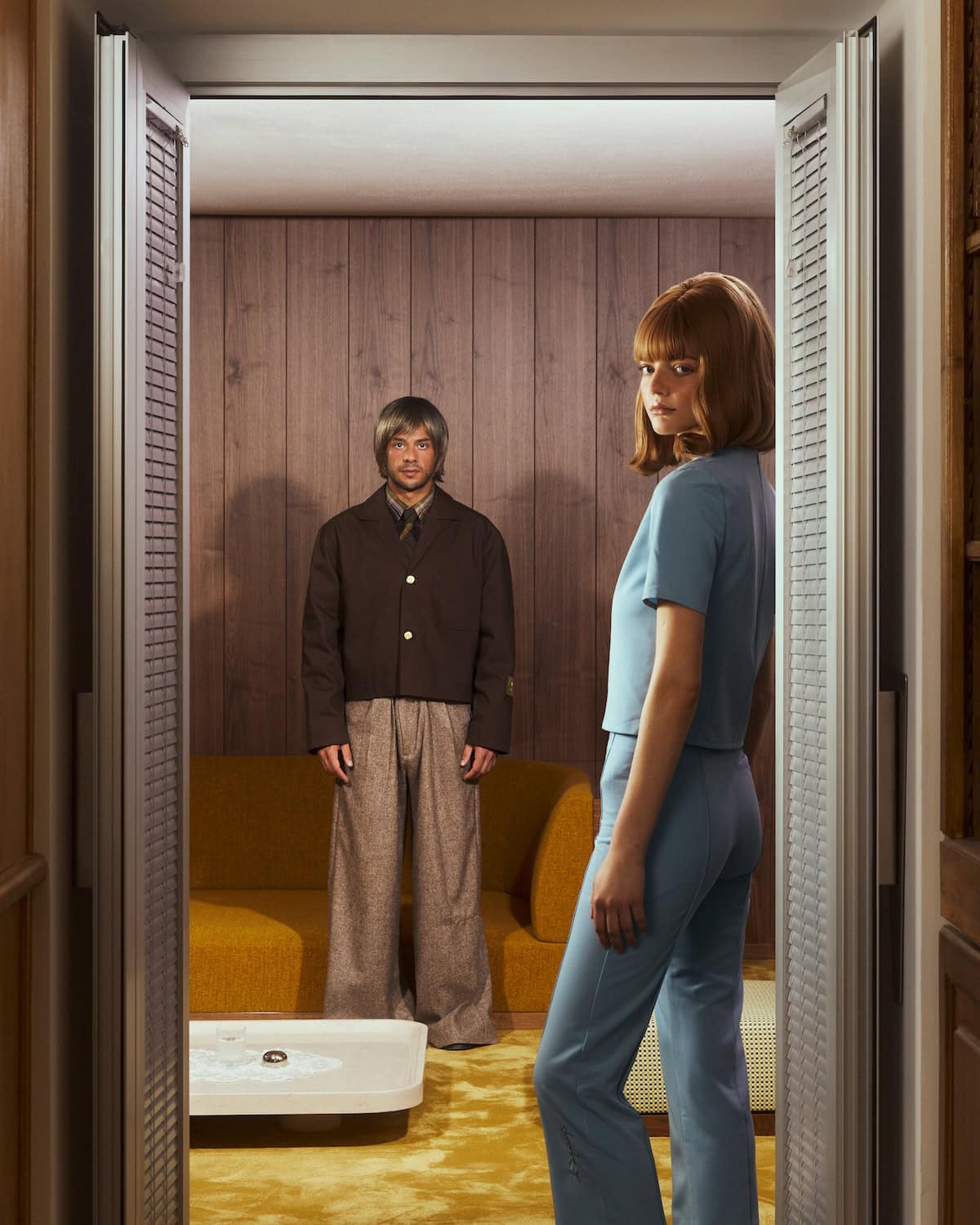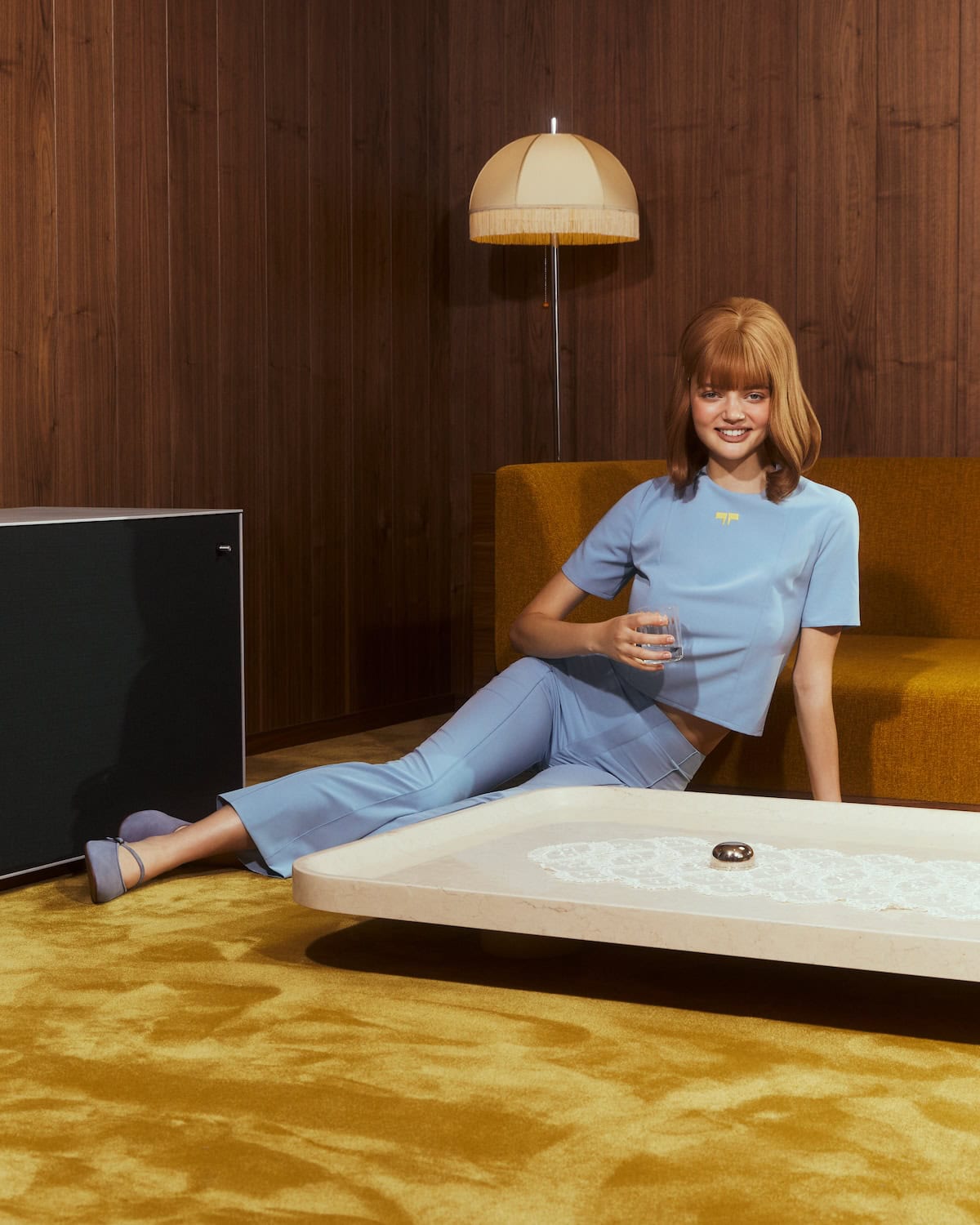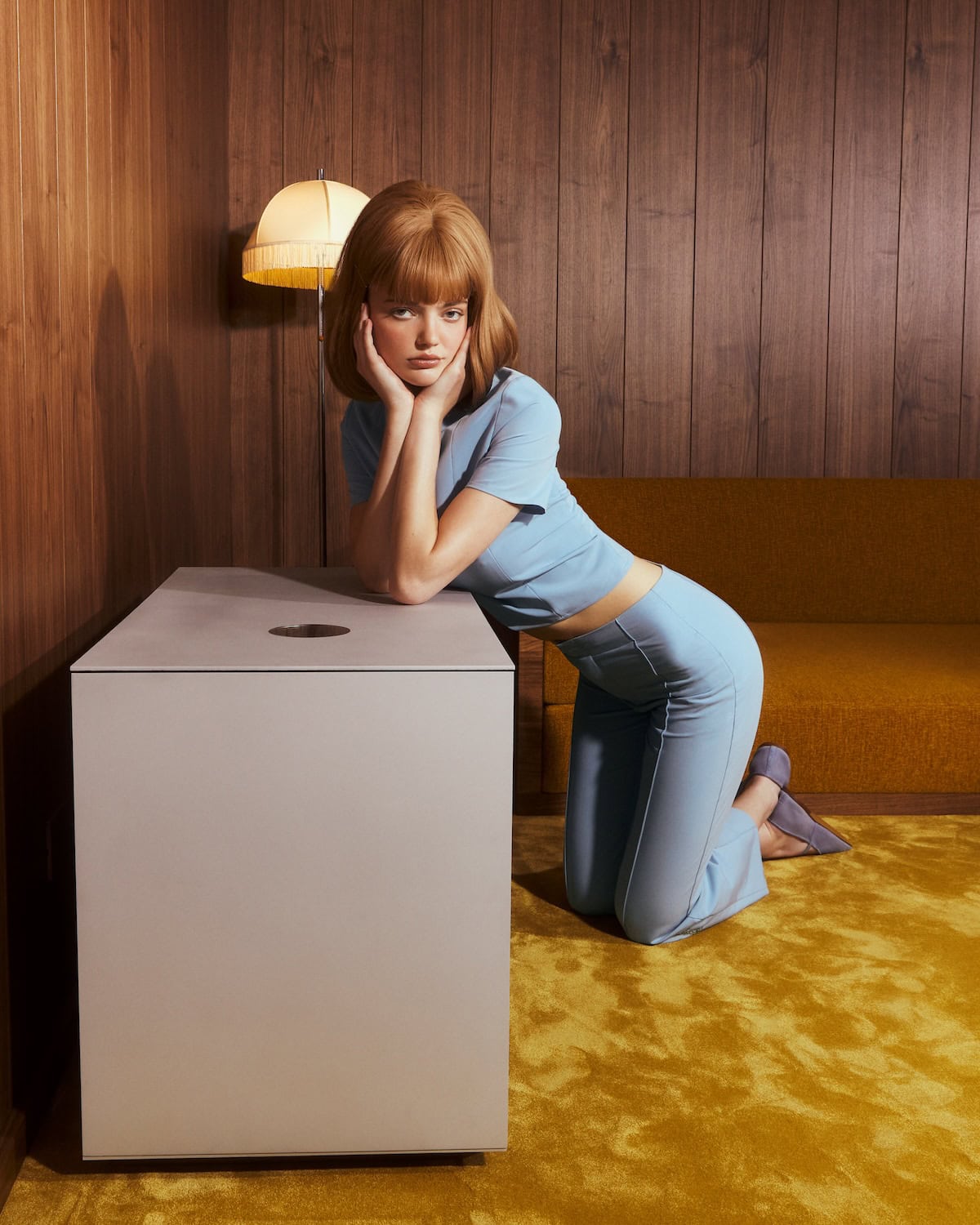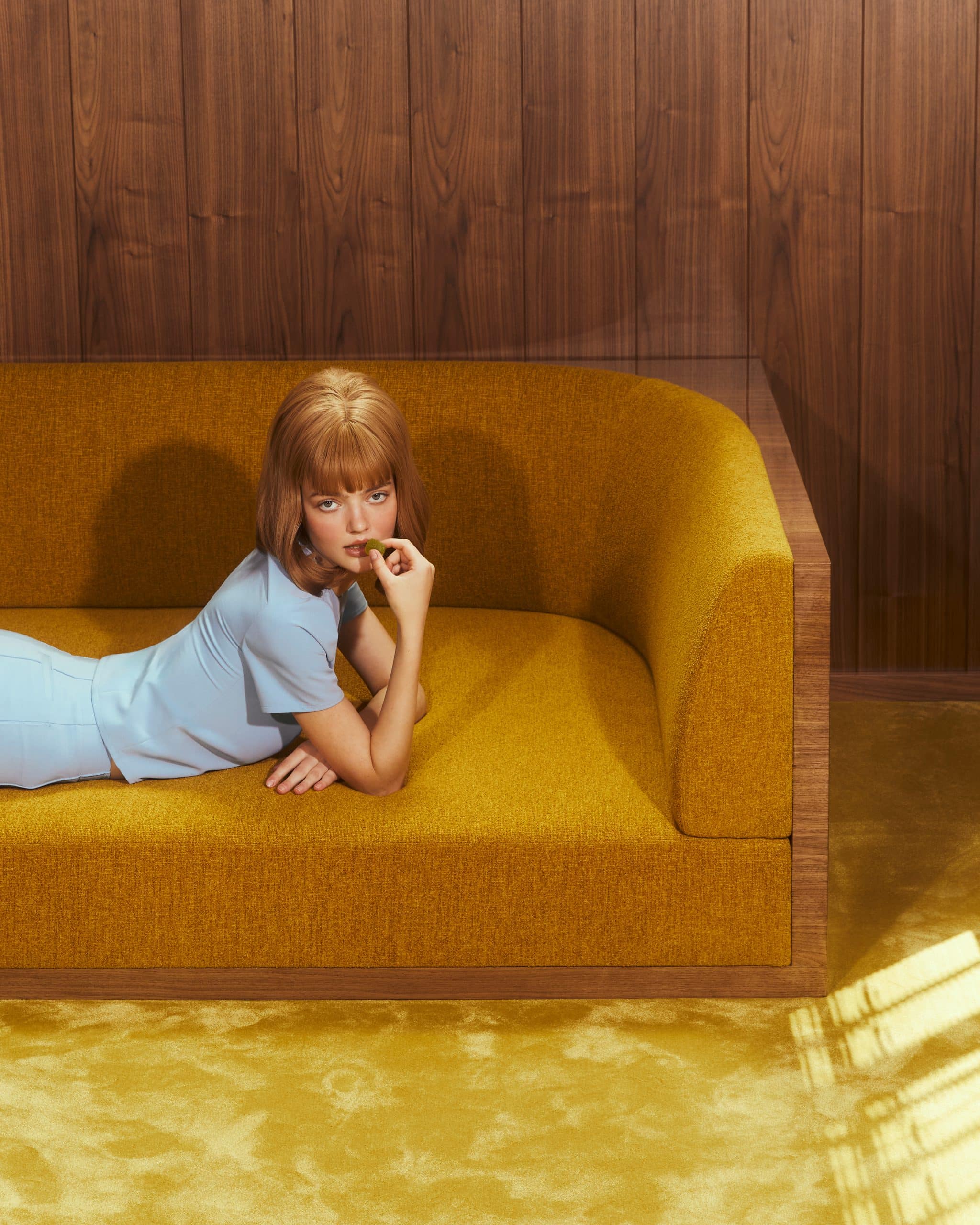This year, during Milan’s Design Week, not far from the Velasca Tower and along Via Stampa, the eponymous Bistrot—conceived by chef Marco Guzzetti—offered a fascinating journey back in time, precisely to 1971. This was made possible through the site-specific work of the design studio NUOVA Group with their project “Time Travel,” which highlighted their dedication to luxury design and craftsmanship: within the setting, a rich selection of elements including furniture, lighting, fragrances, music, and gastronomy were meticulously blended as a hallmark of their design approach and a theoretical mindset that shifts from singularity to a synergistic dialogue among furniture, sound, and scent, thus recreating not just a bygone atmosphere but also the vision of living in the future. Greeting the audience with a sweet “Welcome Darling,” a hostess seemed to step right out of the 1970s in speech and attire, evoking the era of Johnny Cash and Jefferson Airplane, with open spaces, natural ingredients, and aromas from exotic locations, featuring bold colours, shaggy rugs, and craft furniture, emphasizing another vital aspect of the project: its theatricality.
Founded by Rodrigo Caula and Enrico Pietra, NUOVA Group places research and innovation at the core of its activities. Adopting a multidisciplinary approach, the studio displays a magnetic pull towards global visual culture, prompting them to create immersive spatial experiences using design as a concrete intervention in the everyday object-user relationship, thus influencing people’s lives. Their ongoing search for materials and collaboration with high-level artisans has enabled the studio to gain experience with established brands like Tesla, Yeezy, and Rimowa, excelling in industrial design, creative direction, material innovation, and sustainability strategies, from packaging to product development.
The 2024 Milan Design Week marked NUOVA Group’s official debut with a project embodying their commitment to shaping the future by drawing from the past, without a hint of nostalgia but with a keen focus on aesthetics and spatial choices worthy of revival, reinterpretation, and adoption in our present. The installation, set up on Besana Carpet Lab’s carpets, provided an exclusive preview of their new limited edition collection, showcasing pieces like the modular “Beverly” sofa, the “Enzo” coffee table, the “NA—10-20” floor lamp, and the “Teddy” Candy Box, which coexists in the small perimeter inside the bistro alongside bonsai trees, Japanese ceramics, and magazines about the West.
Brenda Vaiani: First of all, why did you choose the 1970s for this project?
Nuova Group: The 1970s represented an era when the future was perceived positively for us. It wasn’t a dystopian future like that of Dune, but a sunny, fantastic one; what they envisioned still hasn’t been realised even today. Therefore, the 1970s have always been a starting point for us towards a brighter future. These pieces each reflect that era in their way. We designed the ‘Beverly’ modular sofa, low, wide, and spacious, to recreate a space for socialisation. Remember how certain objects were portrayed in magazine ads back then: with people seated sharing a drink, emphasising a sense of community that seems to be diminishing today. The same goes for the low ‘Enzo’ coffee table, inspired by our trip to Japan, a real time travel to the 70s for us, struck by the use of velvet and the colours purple and green. Every item we designed is a tribute to this decade and how we can reinterpret certain objects.
BV: I noticed immediately the ‘Tony’ speaker system with turntable, emanating pure 1970s music…
NV: Yes, for us, the speaker is an element that in the contemporary world tends to appear overly discreet, almost overshadowed in settings, but for us, it must be a statement piece, an item to show off, not hide. It’s our first project dedicated to speakers. It was also the component that enabled us to unlock this Time Travel with music by Loretta Lynn, discovered during a trip to the desert. We realized immediately that the speaker had to be the medium to convey our design concept. It’s made of aluminium with a futuristic design but has walnut wood interiors and houses a 1971 Technics turntable, symbolising the fusion of past and future.
BV: A fusion that extends to the other objects in Time Travel as well…
NV: Absolutely, even in the ‘Loretta’ lamp, which combines different materials between the stem and base, maintaining the polish that is our trademark. Each element creates a connection with other historical and artisanal elements, including the lace doily detail on the ‘Enzo’ coffee table, an item many would consider surpassed, but, for us, represents something to recover. And this is why we have chosen to specialise in Luxury Craftsmanship in Switzerland, learning to communicate and work with local artisans. For ‘Enzo,’ we used Verona marble, the sofa’s fabric is from Bergamo, the wood was processed in Padua, and the glass for the ‘Andrea’ chandelier is from Murano, blown and worked in Venice. It’s all about reviving crafts and traditional craftsmanship and adapting them to contemporary times.
BV: It feels like a way of living, our own, that is breaking down. We haven’t lived those years, the 1970s, yet a certain domestic refinement seems quite familiar. Particularly striking is how the installation expands while remaining low, and the walls are deliberately bare.
NV: We conceived this work to create a moment of relaxation. We don’t want there to be too much to look at, to burden our gaze. We are very minimalist. Since our first works, such as the perfume ‘Cylinder’, we have always tried to do as little as possible from a formal point of view. The shapes are simple, yet we want our elements to have a soul. Working with materials, finishes, and different sensorialities gives our designs a timeless appearance.
BV: This formal approach was born after your experience at the artist residency at HDTS by Andrea Zittel in Joshua Tree, California…
NV: Yes, there we had an epiphany about what we were thinking of doing, our ideology, and how to move it forward. Originally starting as concept researchers, our methodology is rooted in analysing materials and advertisements that have defined the most iconic images and atmospheres of specific eras and locations. This approach informs our creative process and helps us to reimagine these influences in our designs. For this work, for example, we based ourselves on old American mail-order catalogues, from which you could buy everything, from guns to clothes, from cabinets to houses.
BV: It’s challenging to draw from past design decades without falling into emulation, or into the sentiment of nostalgia for its own sake, and simultaneously create an atmosphere of objects that make people feel comfortable.
NV: Yes, which is why we wanted to play with sensorialities, working on sound, smell, and the gastronomic part, presenting you with candies and jellies from the 70s, which arrived later in Italy. We chose to present them in small candy boxes, ‘Teddy’, because we are fascinated by the refinement of hotellerie. These elements formally remind us of reception bells. With Marco, we also worked on the bistrot’s menu; we want to maintain a 360-degree approach, continuing to play with shapes and finishes, which helps people understand the importance and value of the object and that they must take care of it.
